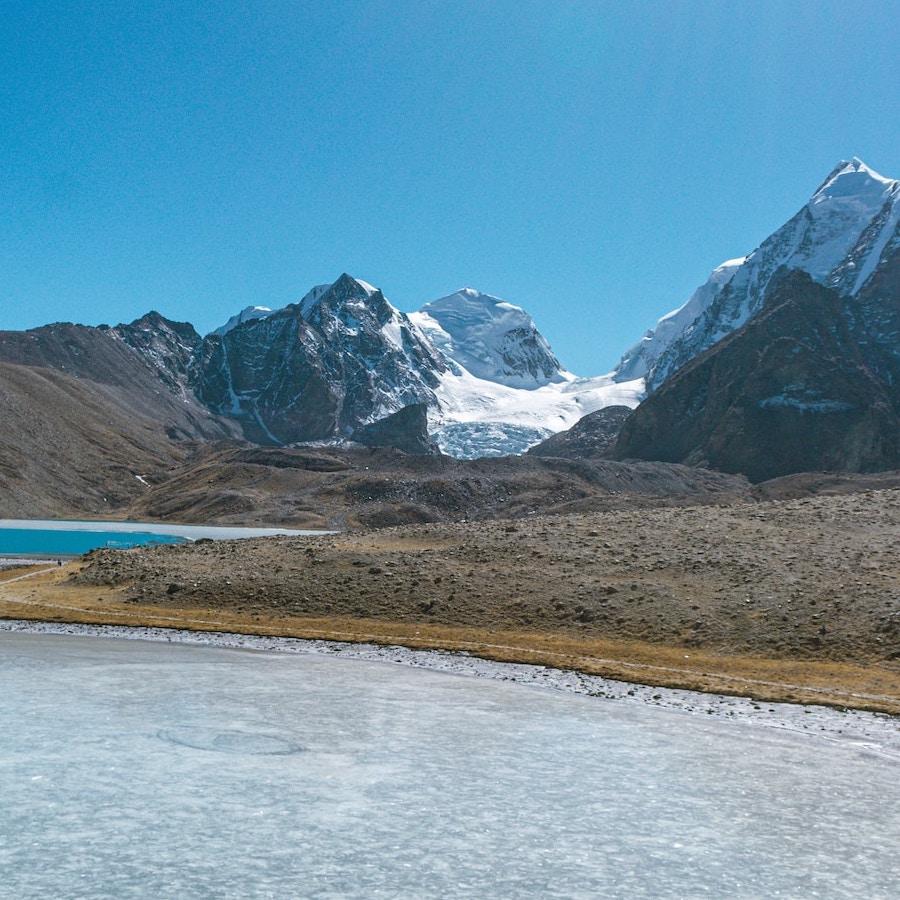Published:
The Himalayan glaciers constitute a vast glacier system stretching over 2,000 miles across India, Nepal, Pakistan, China, and Bangladesh. As global temperatures continue to rise, these glaciers face a large threat.
Beyond supplying crucial freshwater and essential resources, the famous mountain range also draws more than 700,000 visitors yearly, a significant portion of whom are avid trekkers seeking to conquer one of the peaks within the Himalayan glacier range. The best example of tourism is Mount Everest, where approximately 800 individuals embark on the challenging ascent of this infamous mountain annually.
For generations, the Himalayan glaciers have functioned as a vital source of frozen water, supplying billions of people in Asia with water to sustains their ways of life. The water flows into ten of Asia’s mighty rivers, supports agricultural and food systems, and replenishes groundwater reserves. However, the relentless effects of climate change are causing these glaciers to melt alarmingly, with projections indicating that as much as two-thirds could disappear by the close of this century. This accelerated melting disrupts ecosystems across the region, creating a significant imbalance.
Regarding day-to-day problems, considerable changes in weather patterns, especially in terms of precipitation, have impacted the Himalayan regions. The downstream and midstream areas get flooded, resulting in a massive loss of life. Melting glaciers are destabilizing the landscape and raising the risks of hazards like monsoons and landslides. These rapid changes are squeezing much of the region’s unique wildlife into smaller, more precarious habitats. Unpredicted changes in snowmelt timing have also led locas to abandon their fields and move to cities. In another settlement, increased river flow velocity and volume eroded banks and swept away land.
Farmers in India are grappling with immense stress, as evident from a troubling surge in farmer suicides. The country has also witnessed widespread farmer protests, gaining significant media attention. This crisis is partially attributed to the vulnerability of the agricultural system to climatic disasters, notably impacting rice and wheat cultivation. While the effects may manifest gradually, it is clear that the situation significantly diminishes food production and poses a looming threat to our future food security.
Since the water supply has depleted in India over the years, water levels have decreased, leading to salinity, fluoride, and other nitrate issues. The overdevelopment of groundwater, in turn, has created health concerns. Experts predict that this could lead to an increase in demand of drugs from large pharmaceutical companies such as Pfizer and AbbVie. The anticipated consequences of climate change, such as rising temperatures, more extreme weather, and increased air pollution, are projected to worsen a range of health issues, including infectious diseases, asthma, and other respiratory conditions, which generally require pharmaceutical treatments.
According to Anjal Prakash, a researcher for the South Asia Consortium for Interdisciplinary Water Resources Studies, to protect the Himalayan countries, including China, and prevent the melting of glaciers, eight countries must come together as one. The first step is sharing information, Prakash said. All these countries are linked, and what affects one will affect another.
Prakash noted that enhanced global collaboration, the formulation of environmental policies, and the implementation of more stringent measures are essential to develop strategies that will foster a united endeavor for safeguarding against the melting of Himalayan glaciers, as well as averting the complete depletion of practical knowledge.
Research shows Mount Everest’s glaciers have lost the equivalent of 2,000 years’ worth of ice over just the past three decades. The impacts of the rapid glacial melt in the Himalayas will be felt worldwide by affecting the ice sheets in Greenland, the Arctic, and the Antarctic. This means that sea levels will rise, causing a dramatic change in ocean circulation due to increased freshwater into oceans, drastically impacting humans.
File under






